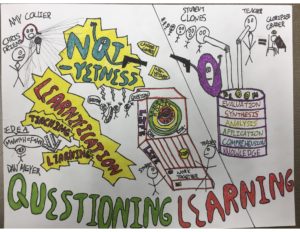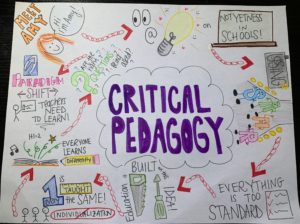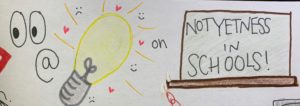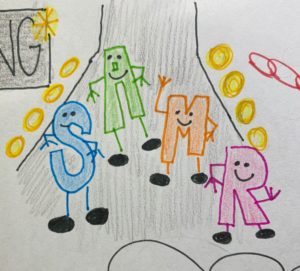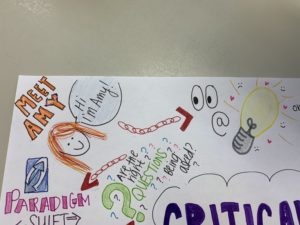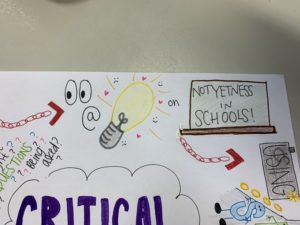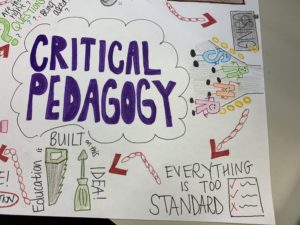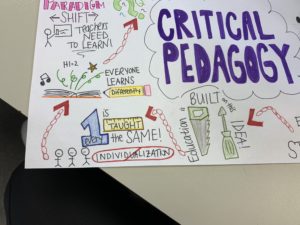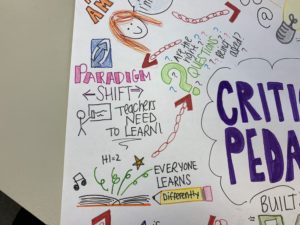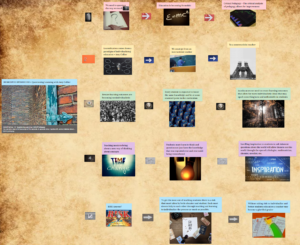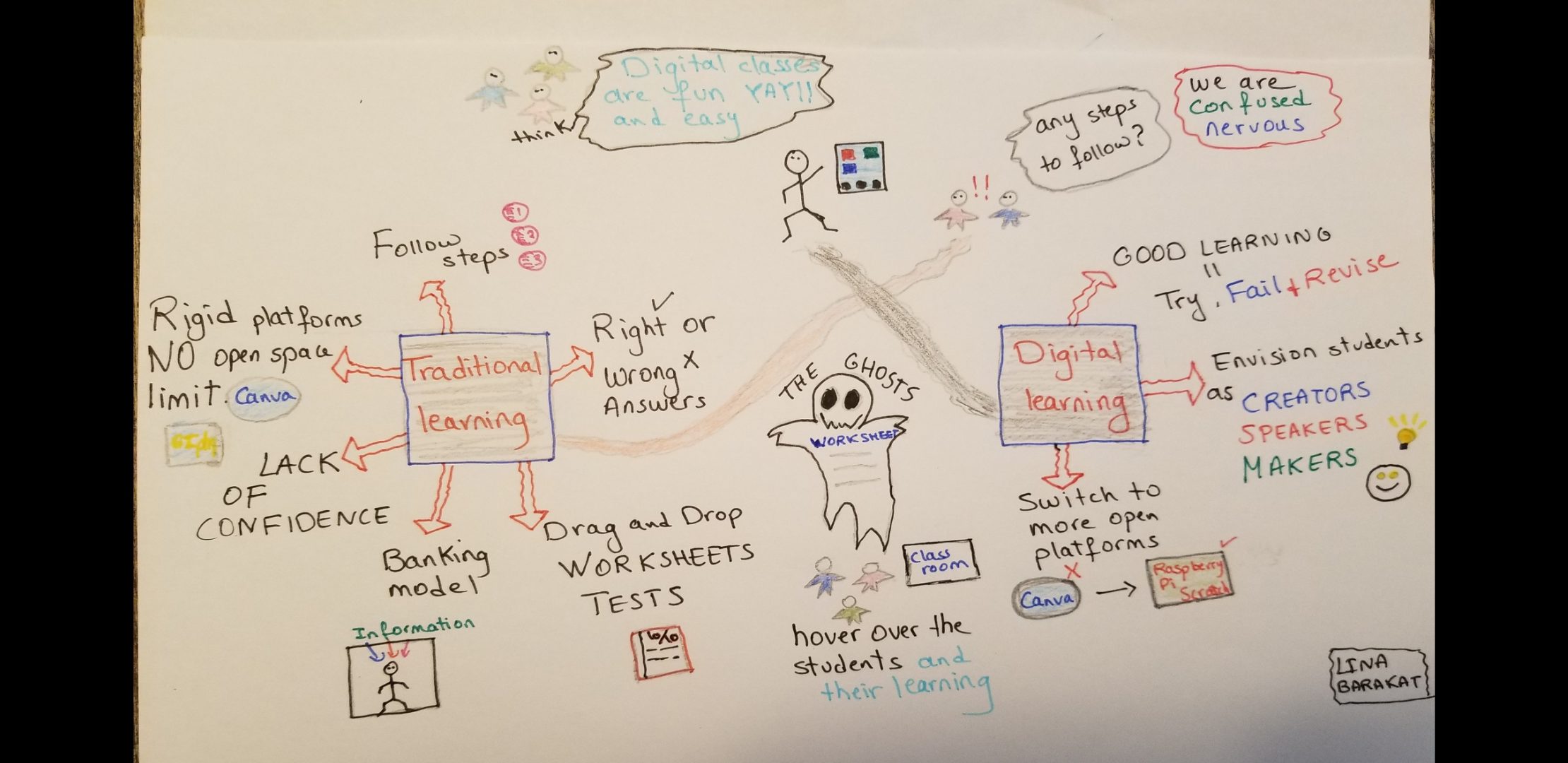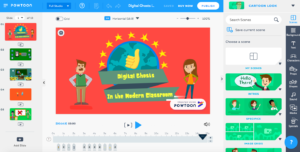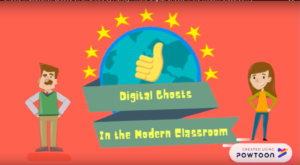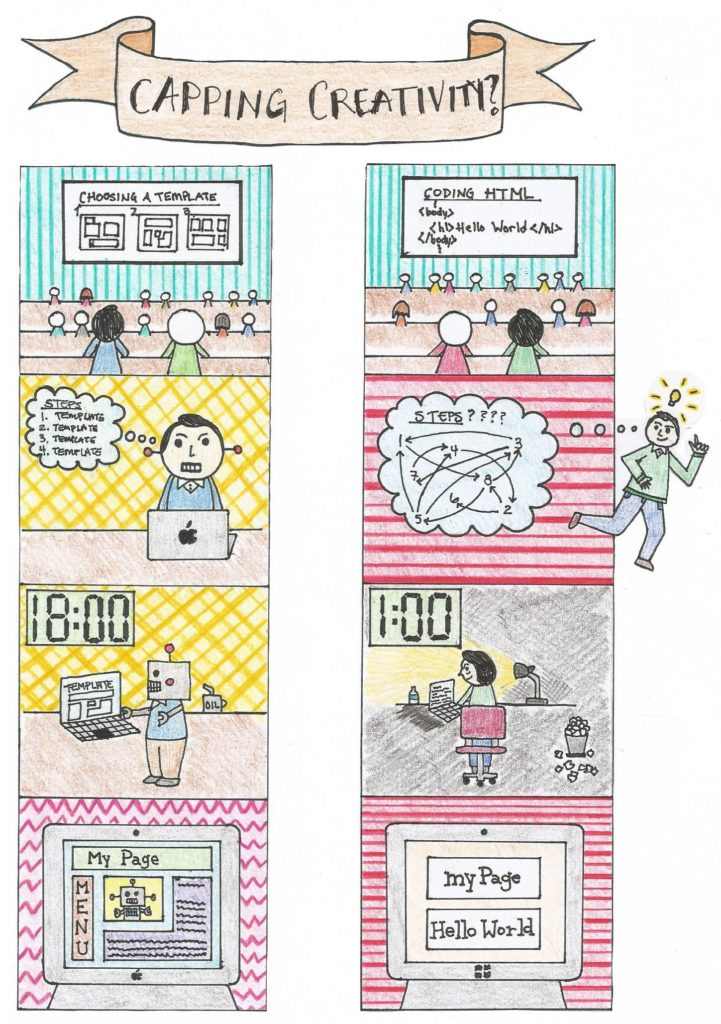Based on the article “Digital Ghosts in the Modern Classroom” by Ashley Hinck, I have decided to create a sketchnote to portray my thoughts. In the sketchnote, I focused on the human brain being the center and key image of the sketchnote. This is to display that our minds have a lot going on and sometimes it is difficult for students to take in so much information at once and try to filter out the important stuff. As educators, there should be no “standardized” practice, therefore students should be able to be provided with more opportunities where they are able to be “creators, makers, and speakers” through the process of trying something new and failing. This will allow the students to become more confident and think outside the box, rather than being afraid and experiencing the “not-yetness” feelings of not being ready. Students are faced with a lot of pressure to create pieces of work that are what they deem to be “correct” or what is advised by the teacher. In my sketchnote, the brain is in the center of the page and embraces a bright outlook of being a maker, creator and speaker, yet there are a lot of other things going on along the sides of the page and this is to represent all of the other distractions that students are sidetracked with, since they are aware of what is “correct” or would be approved, but need to also realize that individuality in one’s work is essential. I have decided to use emojis in my sketchnote as well because I thought of them as an analogy to students being robots. The quotes that are written along with the girl emoji are common phrases that students would be likely to express, which depicts uniformity and lack of an open-mind. Every student should be able to express their own creativity in the medium of their choice. Students should be able to explore technologies without having the teachers or their own level of comfort hold them back from trying out something new. Without doing this, students will always have the fear of not being right or constantly be searching for only the “correct” answers or ways of approaching something, rather than exploring another approach. It is important to let students know that doing something different is okay, and that limiting one’s self takes away the beauty in individuality which is what I tried to depict in my sketchnote. As an educator, in my own practice, I will try to explore this aspect of allowing students to be creators and explore new pathways of learning and creation, and I think that an effective way to do this is by practice. Showing students myself, different ways of approaching how to learn something in several ways will potentially allow students themselves to break out of their comfort zones and know that it is okay to try. I will also emphasize the process of trying and failing being apart of the learning process by demonstrating this in the classroom as well. In technology, not everything works the first time, and showing students that there are alternatives to a solution will show them that problem solving and not giving up is the key to finding a solution. Overall, using digital media should be a learning process for the students as well as the educators, and it should be a continual process that would benefit both parties in the long run. Don’t be afraid to try something new!
I am noticing that my sketchnote is also blurry as I try to resize it bigger, so click here for a link to the larger version. Enjoy!



